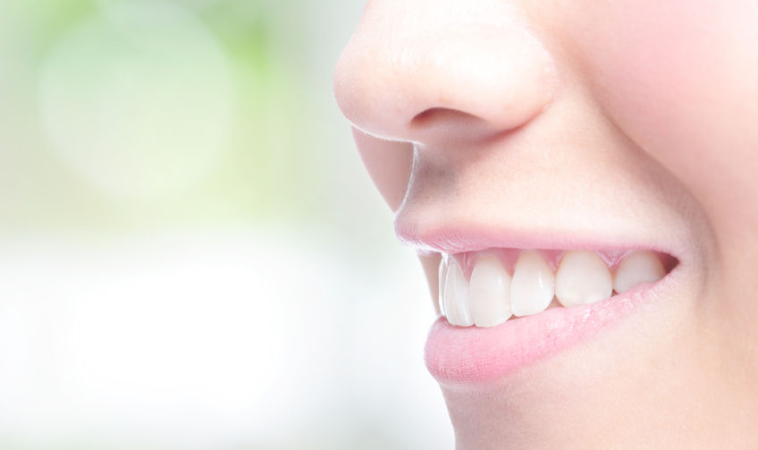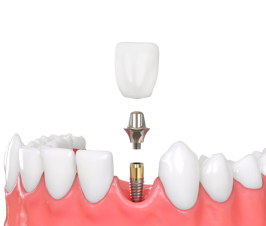Teeth Amaze and Fascinate Me
First, they present in a multitude of shapes, sizes, alignments and an array of colors. In Ayurveda, India’s traditional medicine, these various characteristics correspond to constitutional types, or “doshas,” revealing insights into the personality and physiological nature of the client, and in turn, suggesting appropriate treatment. [Online one can take a “Prakriti Quiz” to help determine one’s dosha and a corresponding regimen.²]
Secondly, if we’re fortunate, teeth can last our entire lives and beyond. Anthropologically and archeologically, teeth reveal much about a person’s lifestyle and diet; they are witness to one’s whole life.
Thirdly, the patterns and nature of teeth, their health, and their care are so uniquely individual forensic investigators use dental records as definitive identification.
And fourth, teeth have a hidden nature, like icebergs below the waterline. We may think of teeth as fairly static, as solid “bones,” relatively unchanging in their mature form unless accidentally damaged or needing repair. We might describe their functions as largely mechanical — acting as tools for tearing or grinding, helping to make food more digestible, or as a defensive barrier, or facilitating speech.³
Teeth are Alive
In fact, teeth are active and alive with blood and nerve supply and cells busy performing a variety of homeostatic functions, including as do other bones of the body, acting as a reservoir of “key regulatory inorganic ions calcium, magnesium and phosphate.”¹ Our bones and teeth remodel in response to mineral levels, losing with deficiencies and rebuilding as possible, with sufficiency.
But teeth have an even deeper “secret” nature. Recently, I spoke with an investigative dentist about healthy, alive teeth. He began by referring to an anatomical poster on his wall.
Enamel is Made of Cells that Begin as Large Round Cells and Elongate with Age
The normally visible portion of the tooth is called ‘the crown’ and made of enamel, “a very hard material with little or no protein” and collagen free.³ [Enamel is made of cells that begin as large round cells that elongate with age, and responds adversely to cavity-causing bacteria and positively to “chemical agents used to remineralize the damaged enamel.”³
The portion of the tooth at and just below the gum line is called ‘the neck’. It sometimes becomes exposed with the recession of the gums, often associated with a magnesium deficiency.
The remaining portion of the tooth is called ‘the root’. Teeth in the front of the mouth have a single root, whereas molars have a bifurcated or even trifurcated root.⁴ Teeth are held in the jaw bone by periodontal ligaments via a layer of tissue known as “cement”.³
Below the enamel crown, within the tooth down to the bottom of the roots, is a substance called dentin, softer than enamel but harder than regular bone. Dentin, created by cells called odontoblasts, is made primarily of collagen. The ability of the tooth to withstand the tremendous pressures of mastication is largely dependent on mineralization of the collagen matrix, making it hard. The blood and nerve supply of the tooth lies within the dentin in the ‘dental pulp’.³
Within the dentin are ‘dentinal tubules’ stemming from a layer of cells called odontoblasts that respond to hormones secreted by the hypothalamus in the brain, actively creating the dentin and regulating the flow of substances through the tubules. There is a flow “from within the body, through the pulp chamber, through the interstitial fluid to inside the dentin tubules, through the enamel and into the mouth.”²
That’s worth repeating. Although the dentin is without blood or nerve supply of its own, under healthy circumstances and the influence of hormones released in the brain chemical messages, minerals and nutrients flow through the enamel of the teeth and into the mouth. Therefore, under healthy circumstances, the teeth act as a medium of exchange from body interior to exterior, a very strange concept.
Decay not Due Primarily to External Contamination of the Tooth, but via an Upset of Normal Tooth Metabolism
Dr. Ralph Steinman of Loma Linda University, proved this flow by injecting radioactive material into the abdomens of rats, and within six minutes, finding it in the rats’ dentin, and within an hour, tracing it coming through the enamel. In research spanning forty years, Dr. Steinman proved “the occurrence of decay is not due primarily to external contamination of the tooth through acid producing foods and bacteria, but through an upset of normal tooth metabolism.”¹ Under the influence of poor diet, stress, circulatory problems, endocrine dysfunction and hormonal imbalance dentinal flow may stagnate or reverse, sucking bacteria from the mouth into the tooth. “Microbial contamination” may result, making a living tooth a “focus of infection.”¹
Adding Copper, Iron, and Manganese to a Decay Producing Diet Nearly Abolished the Decay Rate
Dr. Steinman identified several minerals as critical to the health and healthy physiological functioning of teeth. “According to Dr. Ralph Steinman’s findings, oral inflammation coincides with the loss of magnesium, copper, iron, manganese, zinc, phosphorus, ATP, ADP, sulf-hydro groups and acetylcholine from the pulp chamber and dentin.” By adding copper, iron and manganese to an otherwise decay producing diet, he “almost abolished the decay rate.”¹
As often happens, the deeper truth is overlooked and “advances” move on to a different novelty. Since the year 2000, advances in dentistry are focussing on “biofilm activity.” Biofilms are antibiotic resistant “slime layers” exuded defensively by microbes as a barrier which also allows the sharing of nutrients and genetic information, invisible apparently to the immune system. Biofilms find attachment relatively easy on “tooth surfaces, porous composite surfaces (non-amalgam fillings), etched ceramic surfaces, stagnant dentin tubules and metal surfaces.”¹
Biocompatible Levels of Activated Copper and Reducing Recurrent Decay
However, biofilm microbiology seems to be in alignment with Dr. Steinman’s findings. “It may be historically and currently supported that recurrent decay can be greatly reduced using cements containing essential trace minerals, including biocompatible levels of activated copper. Such a combination, while effective in destroying pathogenic microbes, also supports the metabolic processes within odontoblasts, which in turn supports dentinal tubular flow and the overall health of the tooth.”¹ If you like trivia, these findings are also consistent with the long ago dentist from the OK Corral, Doc Holliday, who used a “red copper cement” as a germicidal in his dentistry.¹ Some old remedies continue to prove themselves.
 Katy Nelson, ND, (Bastyr ’94), with an office since 1997 in Michigan’s rural Upper Peninsula on the shores of beautiful Lake Superior, promotes our Nature devoted profession through consultation, writing and mentoring. She is joined by Bastyr grad, former mentoree and Pediatric specialist, Alicia Smith Dambeck,LAcCH (also ad locum in St. Paul with AmyJohnson Grass, ND). Since 2011, Dr. Katy has been ad locum herself in SW FL for family matters.
Katy Nelson, ND, (Bastyr ’94), with an office since 1997 in Michigan’s rural Upper Peninsula on the shores of beautiful Lake Superior, promotes our Nature devoted profession through consultation, writing and mentoring. She is joined by Bastyr grad, former mentoree and Pediatric specialist, Alicia Smith Dambeck,LAcCH (also ad locum in St. Paul with AmyJohnson Grass, ND). Since 2011, Dr. Katy has been ad locum herself in SW FL for family matters.
References:
- Fraser, TW. Dentinal Tubular Flow and Effective Caries Treatment. Dentinal Tubular Flow and Effective Caries Treatment. Available at: http://www.copalite.com/dentinal%20tubular%20flow%20and%20effective%20caries%20treatment-%20revised.htm. Accessed October 28, 2015.
- Welch, C. Determine Your Constitution By Taking The Prakriti Quiz. Mischke M, ed., eds. Ayurvedic Dosha Quiz. Available at: http://www.banyanbotanicals.com/info/prakriti-quiz/. Accessed October 17, 2015.
- Boskey, AL. Mineralization of Bones and Teeth. Elements. 2007;3:387–393. Available at: http://pbsb.med.cornell.edu/pdfs/elements_v3n6_boskey_v1.pdf.
- Netter, FH. Atlas of human anatomy. 4th ed. Philadelphia, PA: Saunders/Elsevier; 2006.
- Alter, T. Teeth Whitening Ayurvedic and Home Remedy Methods. Ayurvedic Treatment RSS. 2009. Available at: http://www.ayurvedic-treatment.com/teeth-whitening-ayurvedic-and-home-remedy-methods/. Accessed October 17, 2015.
- Encyclopedia Britannica Online. 2014. Available at: http://www.britannica.com/science/dentin. Accessed October 19, 2015.

















